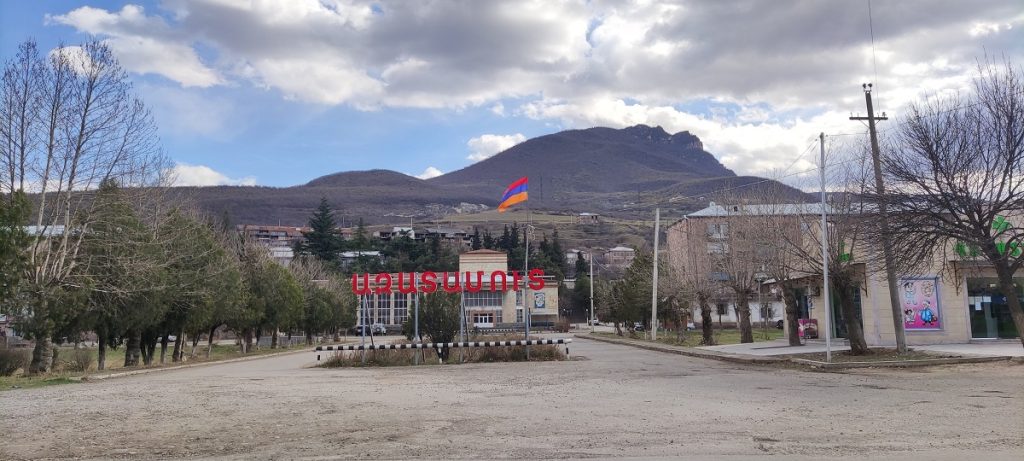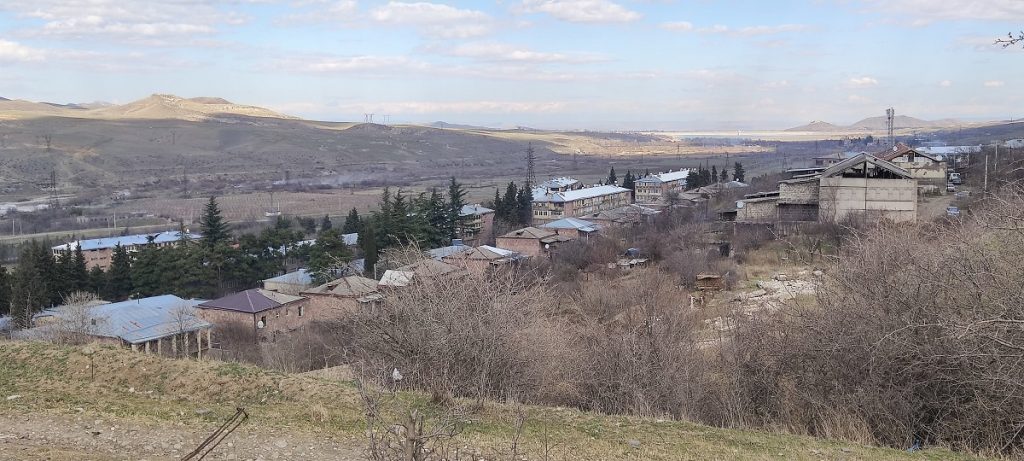Enclaves - islands of Armenian-Azerbaijani confrontation
Exchange or return enclaves
The conflict between Armenia and Azerbaijan outside of these countries is perceived through the prism of the Karabakh issue. Meanwhile, the bilateral agenda has expanded significantly, especially after the 2020 44-day war. Yerevan and Baku are now negotiating the unblocking of transport communications, a peace treaty, as well as demarcation and delimitation of the state borders. On the same agenda, another rather important topic for Armenia is enclaves.
- ‘Armenia is a free country, unlike Russia’: rallies in Yerevan amid Russia-Ukraine war
- Opinion: Armenia is stuck between the West and Russia
- Will Armenia and Azerbaijan sign a peace treaty despite disagreements?
What are enclaves?
A common definition of an enclave is the territory or part of the territory of one state, surrounded on all sides by the territory of another state.
Azerbaijan has three enclaves in Armenia, which include six villages. They remained so only on paper. Where there used to be Azerbaijani settlements, now no one lives, there are no buildings left. Just like in the only Armenian enclave on the territory of Azerbaijan – Artsvashen (in Azerbaijan the village is called Bashkend).
Azerbaijani enclaves in Armenia are located in the Tavush and Ararat regions. These are the villages of Baghanis-Ayrum, Nerkin Voskepar (Ashagi Askipara) and Verin Voskepar (Yukhari Askipara), Barkhudarly, Sofulu, and Tigranashen (Kyarki).
These settlements were ceded to Armenia as a result of hostilities in the 90s, during the first Karabakh war. The village of Artsvashen, in turn, came under the control of Baku. There were no inhabitants left in any of the settlements due to hostilities.
Where enclaves came from and why they became a problem
It is known that enclaves on the territory of Armenia and Azerbaijan appeared during the Soviet period. But on the basis of what decisions and what legal basis these lands were transferred to another Soviet republic, remains unclear, says cartographer Shahen Shahinyan:
“At this moment, the documents on the basis of which the exchange was made are unknown. There are decisions that were made in Moscow, there were also verbal justifications. The main thesis is this: the territories were transferred due to the fact that the majority of their inhabitants were representatives of the neighboring republic.
In other words, it is believed in Armenia that the decisions on the transfer of territories were made groundlessly.
“In the 1920s, these villages were part of Soviet Armenia. Under the influence of some circumstances, an exchange took place. We received some territories from Soviet Azerbaijan – and these enclaves were created. The borders between the two Soviet republics changed at intervals of 5-10 years. And this process was not regulated in any way, everything was decided at the level of local leaders – and not even the leaders of the republics, but local party leaders”, notes journalist Tatul Hakobyan, who has been studying the problem of enclaves for many years.
In the Soviet period, few could have imagined that a large country would fall apart and a struggle would begin between the republics for every kilometer of land. The enclaves have also become a bone of contention.
The following questions remain open:
- Who decided to make territorial changes and why?
- Why do these changes need to be enforced now?
This position is shared not only by the expert community of Armenia, but also by the leadership of the country.
“We need to understand what is the legal basis used for the drawing of enclaves on the map and whether there was a legal basis at all. Either this is just a contour on the map, or, say, the decision of two collective farms that one gives part of its territory to another. We strongly doubt that these actions have a legal basis”, Prime Minister Nikol Pashinyan said earlier.
Why the issue of enclaves became relevant
Although it is not officially mentioned, the topic of enclaves was included in the negotiation process between Yerevan and Baku at the initiative of Azerbaijan. Ilham Aliyev insists that this issue should be discussed and resolved, he stated this in numerous interviews.
In the summer of 2021, information appeared about a document that the Armenian authorities were supposedly going to sign. According to the leaked information, Yerevan agreed to transfer the enclaves to Azerbaijan in exchange for the withdrawal of Azerbaijani armed forces from the sovereign territories of Armenia, which they had penetrated in May. The document was never signed.
The Prime Minister of Armenia Nikol Pashinyan, despite the legal problems, believes that it is necessary to find a solution acceptable to the two countries regarding the enclaves. According to him, there is a common logic based on international best practice and law:
“According to it, the situation that exists now remains unchanged. Why? Because we also have an enclave – Artsvashen, under the control of Azerbaijan. Our logic is as follows: an enclave should be exchanged for an enclave. What is under their control remains under their control. What we control, we keep”.
It is not yet known whether Baku agrees to this option, because there are more Azerbaijani enclaves in the territory of Armenia than Armenian in the territory of Azerbaijan.
In addition to maintaining the current situation, that is, the exchange of territories, there is another solution to the problem of enclaves – the parties can go for the return of territories, that is, recognize the territorial division that existed during the Soviet Union. This will mean that Baku will receive three enclaves under its jurisdiction and Yerevan – one.
Will this option suit Yerevan?
The option of returning the territories is beneficial for Azerbaijan and fraught with certain problems for Armenia. If Baku gains control of the enclaves, some settlements in Armenia will be within a few meters of Azerbaijani positions.
The village of Azatamut is considered to be located at the border area. From here to the combat positions no more than a kilometer. The settlements of the neighboring state are visible to the naked eye.

Azamut itself is located on a hill, behind the mountain is already Azerbaijan. Nearby are rusty railway tracks that lead to the neighboring country. Trains stopped running here already at the beginning of the first war in Karabakh.
The inhabitants of Azatamut still remember the times when Azerbaijani villages were very close. Azatamutians have heard talk about the possible return of these territories to Azerbaijan, but they are trying not to worry yet, since there is no official confirmation yet.
“We heard people talking about enclaves on TV. Aliyev said he wanted all the lands. How true this is, I don’t know. People live peacefully with their everyday problems. If these lands are given away, it will harm us. If they get so close, people will start to worry”, said Hrant Baghdasaryan, a resident of the village.
In addition to security issues, the return of the enclaves is fraught with other problems. For example, Azatamut will lose part of its pastures. In the absence of fodder for livestock and the close proximity of Azerbaijani positions, the future of this settlement becomes rather doubtful.
But the main problem for Armenia in the case of the transfer of territories to Baku is related to roads.
Azerbaijani enclaves are located in close proximity to two interstate roads.
“If these enclaves are surrendered to Azerbaijan, the front line in Tavush will be destroyed – the Azerbaijanis will be in the rear of our troops. Armenia will exist until the Azerbaijanis close the roads leading from Tavush to Georgia and Russia or from Syunik to Iran. If this happens, which is a very realistic scenario during a possible escalation, the country will be in a total blockade,” notes political scientist Edgar Elbakyan.
The Tigranashen enclave is located near the border with the Nakhichevan Autonomous Republic. The state highway Yerevan-Goris-Kapan-the border of Iran also passes there. If Tigranashen goes to Baku and the armed forces of a neighboring country are located in this territory, Azerbaijan will receive full control over the main logistical artery of Armenia. There may be a situation similar to the Goris-Kapan highway, in some sections of which Azerbaijan has already set up checkpoints.
Another potential problem area is the M-4 highway, which connects Yerevan with the north of the country and goes to the border with Georgia. With the loss of the villages of Verin and Nerkin Voskepar, this route is also under the supervision of Azerbaijan. In fact, Armenia can be cut off from Georgia and Iran, with all the ensuing consequences.
Be that as it may, at the moment the most likely scenario seems to be the preservation of the current configuration, where the parties simply exchange enclaves. Armenian Prime Minister Nikol Pashinyan stated this in his last interview.
This avoids many of the problems that will arise in the event of the return of the enclaves. Whether the parties will come to any solution at all will depend on the dynamics of the negotiations between Armenia and Azerbaijan.

The material was prepared with the support of the Russian language news exchange


















